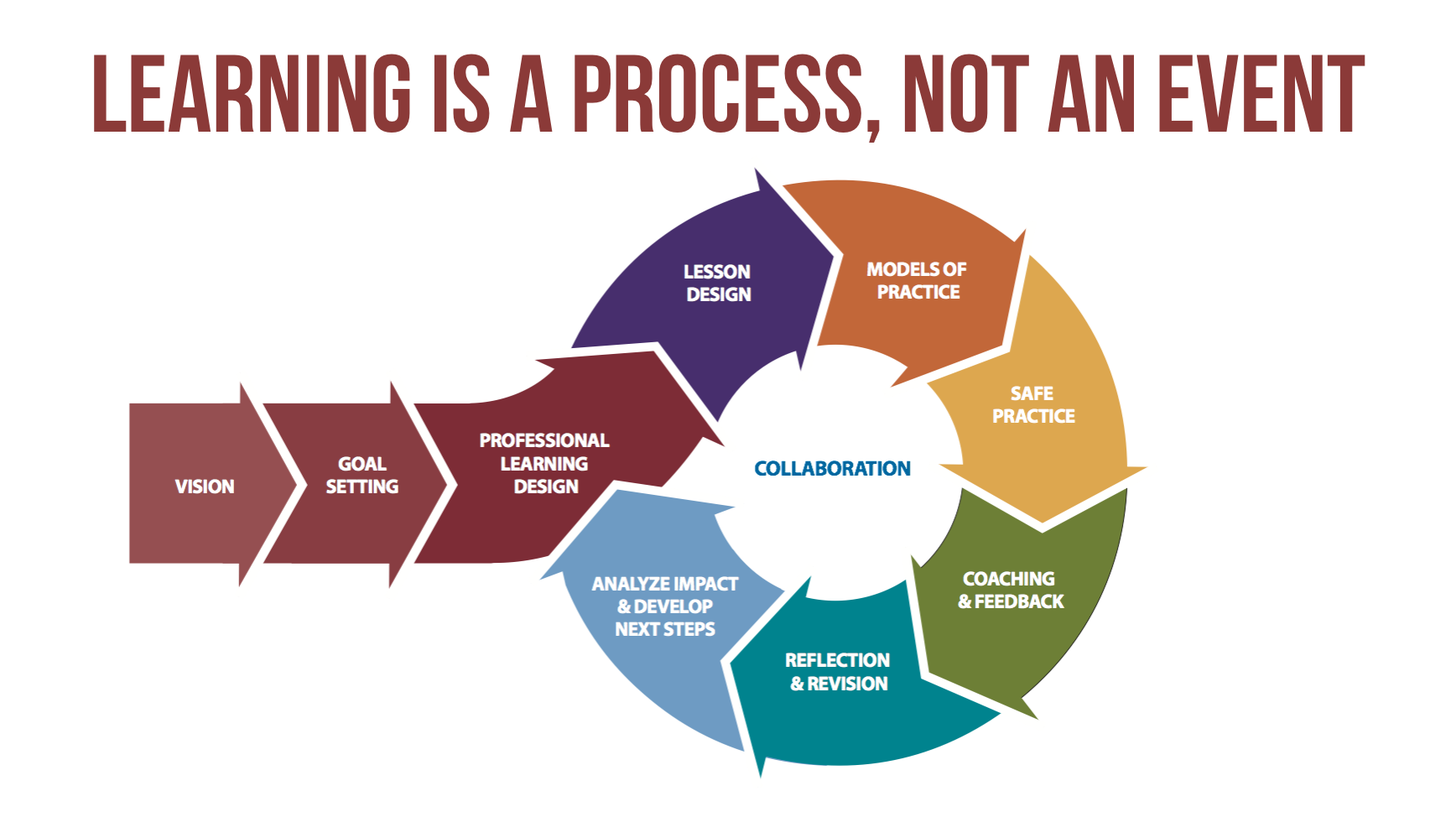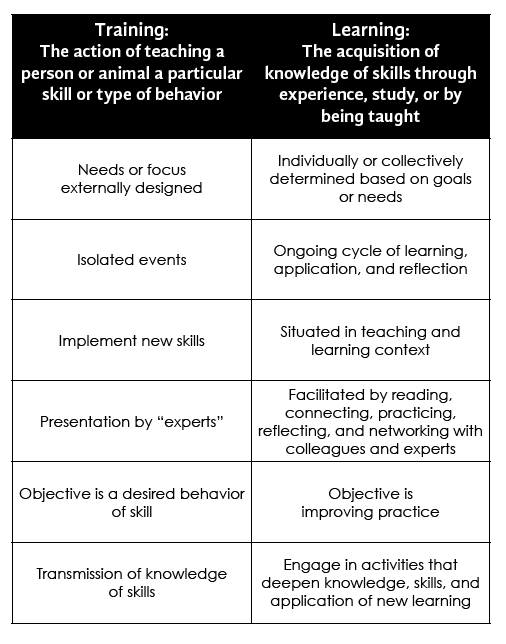I was talking with a good friend and former colleague of mine, Ed Hidalgo, who has transitioned into education from the world of business and has recently become the Chief Innovation & Engagement Officer in Cajon Valley Union School District. The district is making a bold effort to achieve their vision of “Happy Students, Engaged in Healthy Relationships, on a Path to Gainful Employment.” Both career development and a whole child development are critical in achieving this vision and as such, so is supporting educators to make these desired shifts in their practice. As we were talking about his evolving work, he asked me, ‘Do we really need PD?’ I asked him to share more of his thinking and here is what he told me about an experience he had with teachers (summarized):
I brought some teachers to a lab recently where people were doing authentic work and they had a chance to ask questions and talk about the connections between their work and the skills and the subject matter that she was teaching her students. They learned so much from the experience and they immediately went back and created a lesson for her students based on what they learned. I didn’t do any “PD” but these teachers are changing the way they teach and sharing their ideas of what else was possible. The one day epxeirence sparked so many more ideas and so many more questions.
His focus is to shift practice in classrooms to impact learners and he saw this happening as a result of this visit, so naturally, he wondered: Why do we need professional development when teachers learn through experience?
My first reaction was, why isn’t that considered professional development?!?!
He said, “I didn’t bring them in a room and tell them what to do.” #UGH
This is the difference that I highlight between training and learning in my book Learner-Centered Innovation. So often we create professional development to train everyone and tell them what to do but miss the learning and, more importantly, the impact on the learners.
How do you define PD?
Although researchers and practitioners alike have advocated for the need to change traditional stand and deliver and episodic professional development models, there has long been a disconnect in practice. There is wide agreement that professional learning should be job-embedded, collaborative, involve models and ongoing opportunities for coaching and feedback, yet many teachers still are required to attend sessions on the latest programs or initiatives without adequate support or guidance to impact the desired learning and student outcomes.
TNTP published a report in 2015, The Mirage, which found that district spent $18,000 per teacher on average in professional development and, despite this investment, most teachers failed to improve. Partly they found this was because “school systems fail to help teachers understand how they need to improve– or even that they need to improve at all.”
As I heard Ed talking about the experience that these teachers engaged in and what happened after, I thought of how it fits in this framework that supports professional learning as a process, not an event.

- Vision– Do you have a common understanding of what you want to accomplish? What is the vision for learning and teaching?How will you empower teachers?
- Goal Setting– What are your specific learning goals aligned with the vision?
- Plan for Professional Learning- How will your team develop new knowledge and strategies to achieve the learning goals?
- Models of desired practices– How will teachers have opportunities to experience new learning? How often do teachers observe other practitioners to develop their practice? How can you leverage technology to see models of ideal practices?
- Safe Practice– How will you ensure teachers have safe opportunities to practice and reflect on new learning?
- Coaching and feedback– How will all teachers receive feedback related to the vision and the desired instructional shifts?
- Reflection and revision– How will teachers reflect on their feedback and make necessary revisions to continue to improve practice?
- Analyze the impact and determine next steps– How will teachers assess the impact on desired student outcomes and determine next steps?
What Ed did was created a more meaningful experience for teachers to envision a new model of what is possible and then provided time, support and resources to allow the teachers to figure out how to create new and better experiences in their classrooms.
We can continue to create new initiatives and programs, but if teachers are not part of the process, we will miss out on our greatest lever in educational change. Teacher’s practices are shaped by their experiences both past and present, and these are mirrored in their classrooms. If we don’t prioritize authentic and relevant learning experiences for educators, how can we ensure our students have deeper learning experiences? Making shifts in how we learn, teach, and lead in education requires that we move beyond talking about theory and best practices (or even a really great framework) to ensuring we not only develop new knowledge and expertise but use it to change how students learn.
If we want to change how students learn, we must change how teachers learn.
How do your professional learning experiences measure up? What are the strengths of your model of professional learning? Where are some opportunities for growth?



Thanks Katie. It is a strange twist of irony that as teachers get more experience, their own capacities to learn often decrease. I imagine in other professions– business for example– a similar dynamic is at work. CEOs of companies might have challenges on this front. Like CEOs, teachers are always in charge and so transitioning into being a student is harder. Thanks for the thoughtful post.
Teacher need effective PD’s that work in an real classroom not a made up one.